Missouri Pacific's Texas Eagle - the final months
Text and photos © 2011 by Bill Pollard
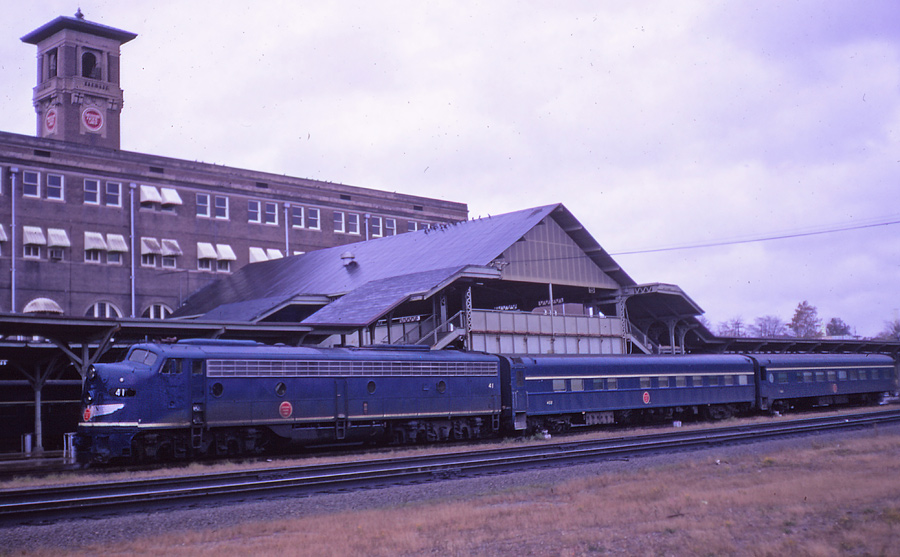
Missouri Pacific Train No. 2, the northbound Texas Eagle at Little Rock, Arkansas, November 14, 1970.

Missouri Pacific Train No. 2, the northbound Texas Eagle at Little Rock, Arkansas, November 14, 1970.
Timetable collectors, click here for a sidebar discussion about Mopac's very last timetable.
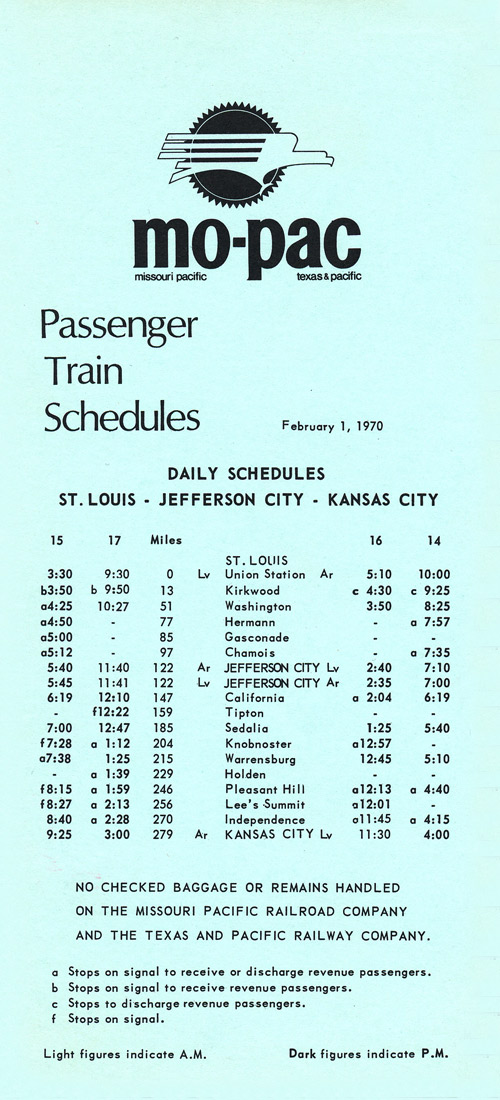
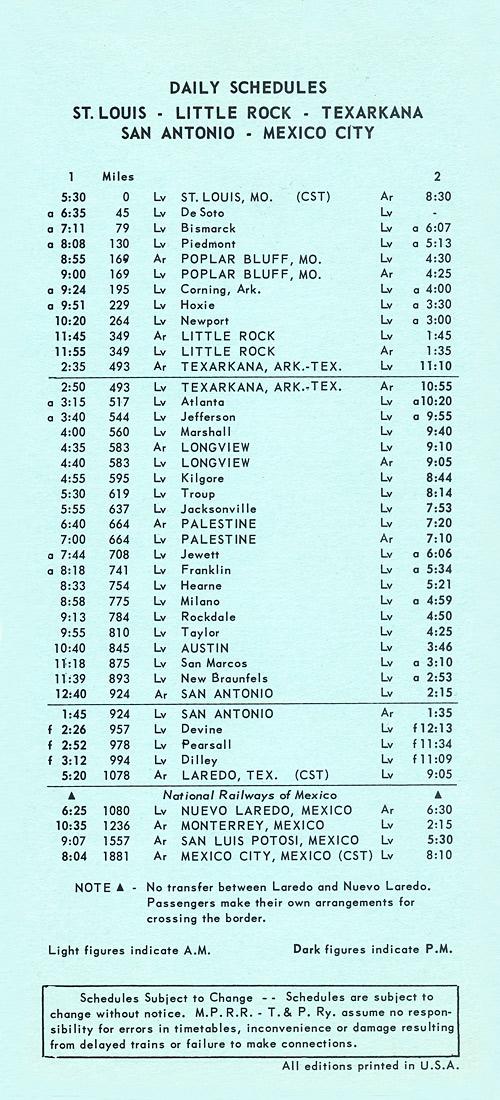
As part of Missouri Pacific's aggressive program of eliminating passenger train service, an application was filed with the Texas Railroad Commission in September 1969, requesting authority to discontinue service between Texarkana and Laredo. This move was quite controversial; the operating practices for Texas Eagle equipment and the vast majority of passengers carried were interstate in nature, while the Texas Railroad Commission's jurisdiction was strictly intrastate. Hearings were held in Texarkana, Palestine, Austin, San Antonio and Laredo, and the proceedings continued into 1970. The National Association of Railroad Passengers intervened, asking that action be delayed until Congress acted on a bill to create a moratorium on passenger train cancellations. This legislation was expected to be signed into law before Congress adjourned for the year.
After the filing of final briefs, the Dallas Morning News on July 12, 1970 speculated that the Texas Eagle's fate was only weeks away. Two months later, the train was still operating while awaiting the Railroad Commission ruling. On Monday, September 21, 1970, the long awaited ruling was made public, authorizing discontinuance between Texarkana and Laredo. Despite the threat of a court appeal by NARP, Mopac moved quickly to discontinue the train. Agents and officials were told that the trains already operating on September 21 would indeed be the final runs. By the time the ruling was issued, the last #1 was almost to Austin and the last #2 was en route from Laredo to San Antonio. By summarily discontinuing the trains with no additional notice, Mopac effectively thwarted most efforts to photograph or ride the final trains, which is one reason for minimal records of the last runs. As the news spread, crowds began to gather at some stations, notably Palestine, Longview and Marshall, to watch the final northbound train pass into history.
The fiasco of the Texas Eagle discontinuance in Texas helped to persuade the Interstate Commerce Commission and Congress to place a moratorium on train discontinuances until Railpax (Amtrak) legislation could be signed into law. When Amtrak was formed, the absence of passenger train service on the primary rail route into Texas caused the new corporation to initially select an alternate route which bypassed Arkansas and east Texas. This oversight was rectified in March 1974 with the inauguration of Amtrak's Inter-American between St. Louis, Dallas-Fort Worth and Laredo. The Inter-American, now reconfigured as a Chicago-San Antonio operation and renamed the Texas Eagle, continues to provide passenger service along much of the original route.
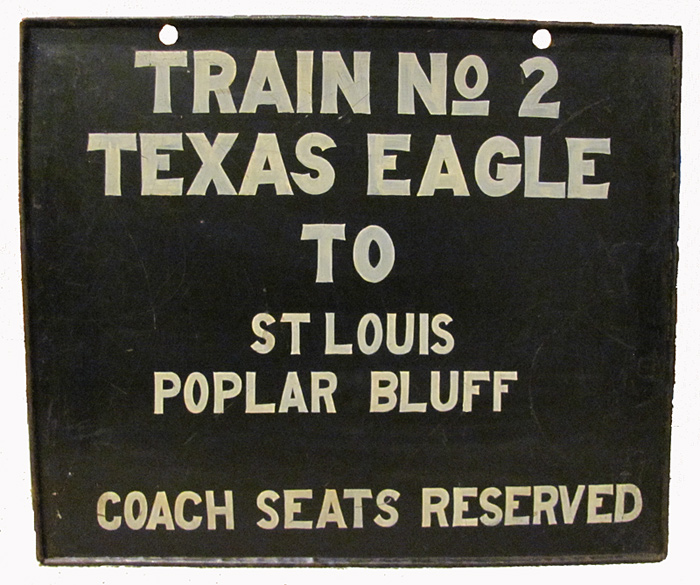
Sign for Train No. 2, used above the stairway gate in the concourse of the Little Rock depot.
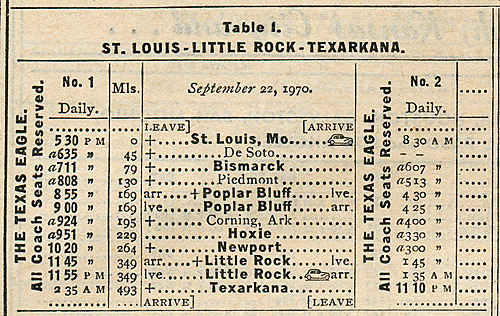
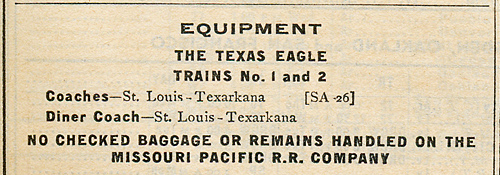
For the first six weeks or so after discontinuance of the service into Texas, the schedules between St. Louis and Texarkana remained unchanged. Train 1 arrived in Texarkana at 2:35 a.m., while train 2 departed at 11:10 p.m. Two sets of equipment were required, and trains 1 and 2 passed each night between Little Rock and Texarkana.
The schedule of train 2 was modified to a later (5:00 a.m.) departure from Texarkana, effective November 11, 1970. This change allowed the equipment arriving on train 1 to be turned at Texarkana, serviced and sent back north the same day on train 2, thus reducing the equipment requirements. This schedule change resulted in a rarity, the last Mopac passenger advertisements, published on several different days in both the Arkansas Gazette and Arkansas Democrat. Throughout this time, the Official Guide continued to identify trains 1 and 2 as the Texas Eagle, although the train only traveled several hundred feet into Texas, depending on whether the train stopped near the north or south stairway at Texarkana.
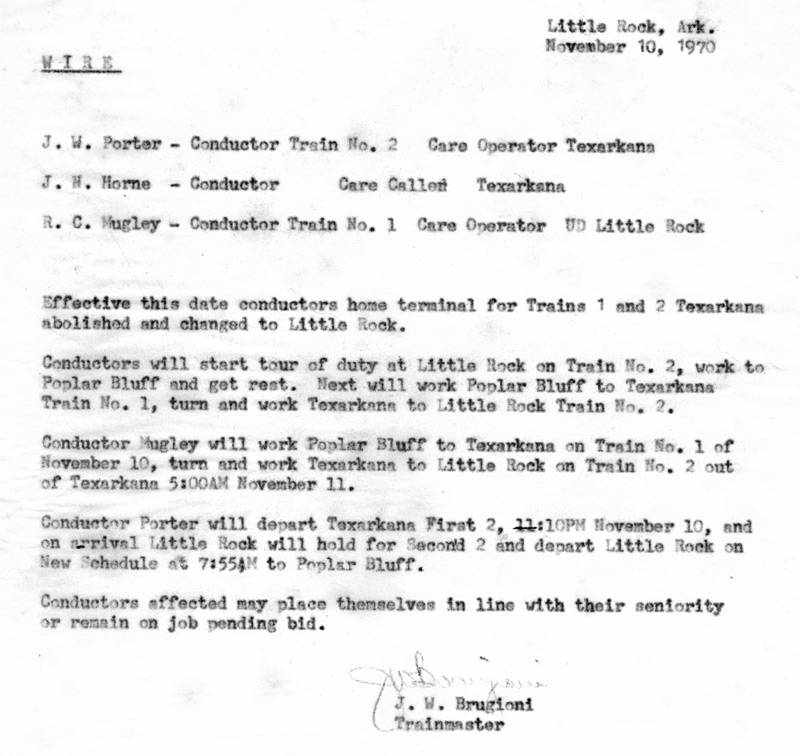
The motivation behind the schedule change was to allow a single set of equipment to protect both the southbound and northbound train with a single turn. An added benefit was that the new schedule, (similar to that of former train 4) provided an after daylight departure from Little Rock, versus the previous 2 a.m. schedule. Little Rock newspaper advertising also suggested that the change improved connections at St. Louis, but this claim was dubious at best. On the eariler schedule, MP train 2 connected with GM&O train 2, the Abraham Lincoln, arriving in Chicago at 2:18 p.m. On the new schedule, connections were made with GM&O train 4, the Limited, with a less desirable Chicago arrival of 9:30 p.m. East from St. Louis, the early schedule connected to Penn Central train 4, the Spirit of St. Louis, which still carried a lounge car, dining car, and through St. Louis to New York sleeping car. The later schedule connected only with Penn Central train 32, a coach-only local that required a change of trains for passengers traveling east of Pittsburgh.
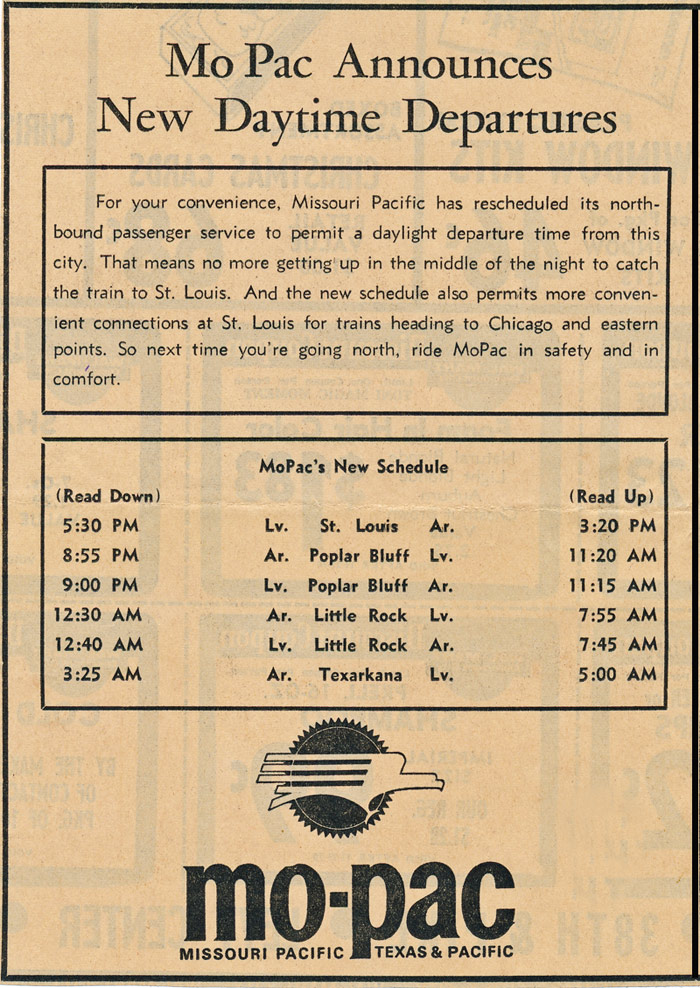
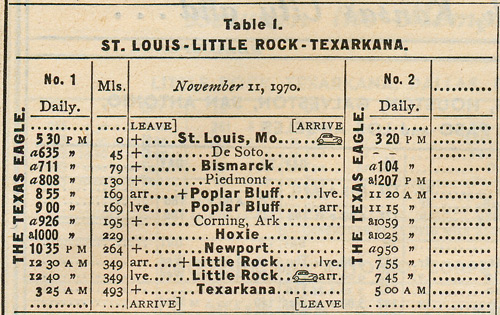
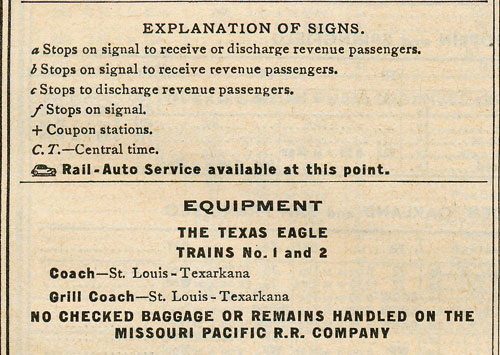
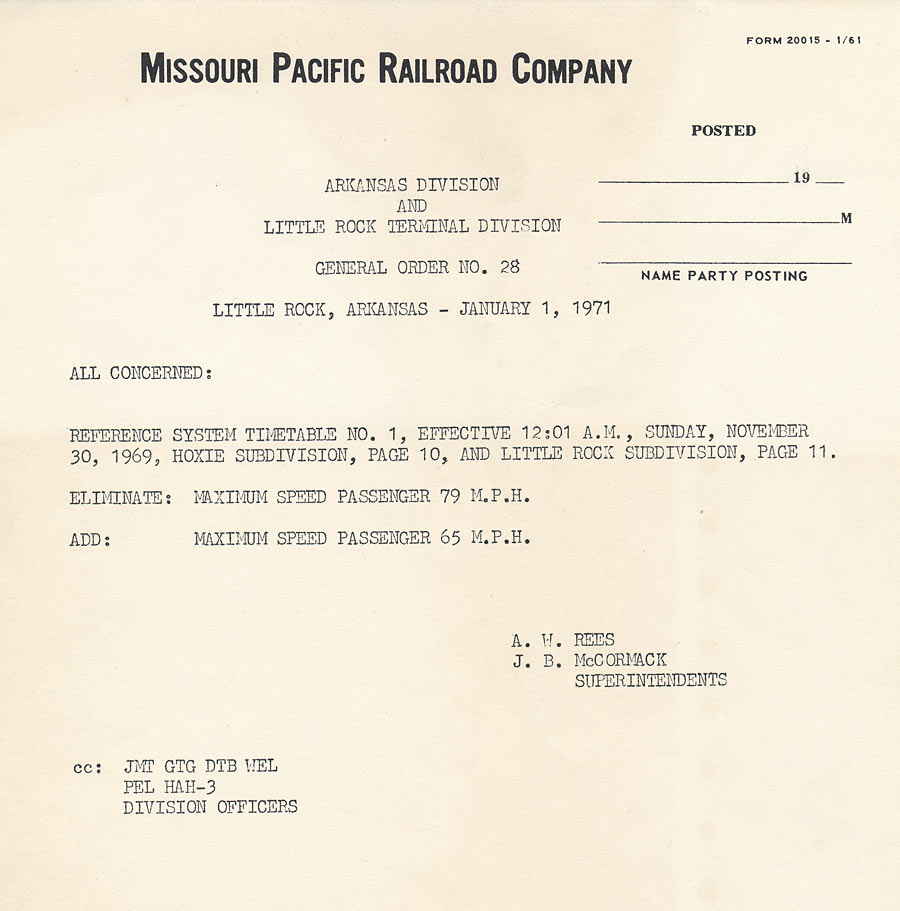
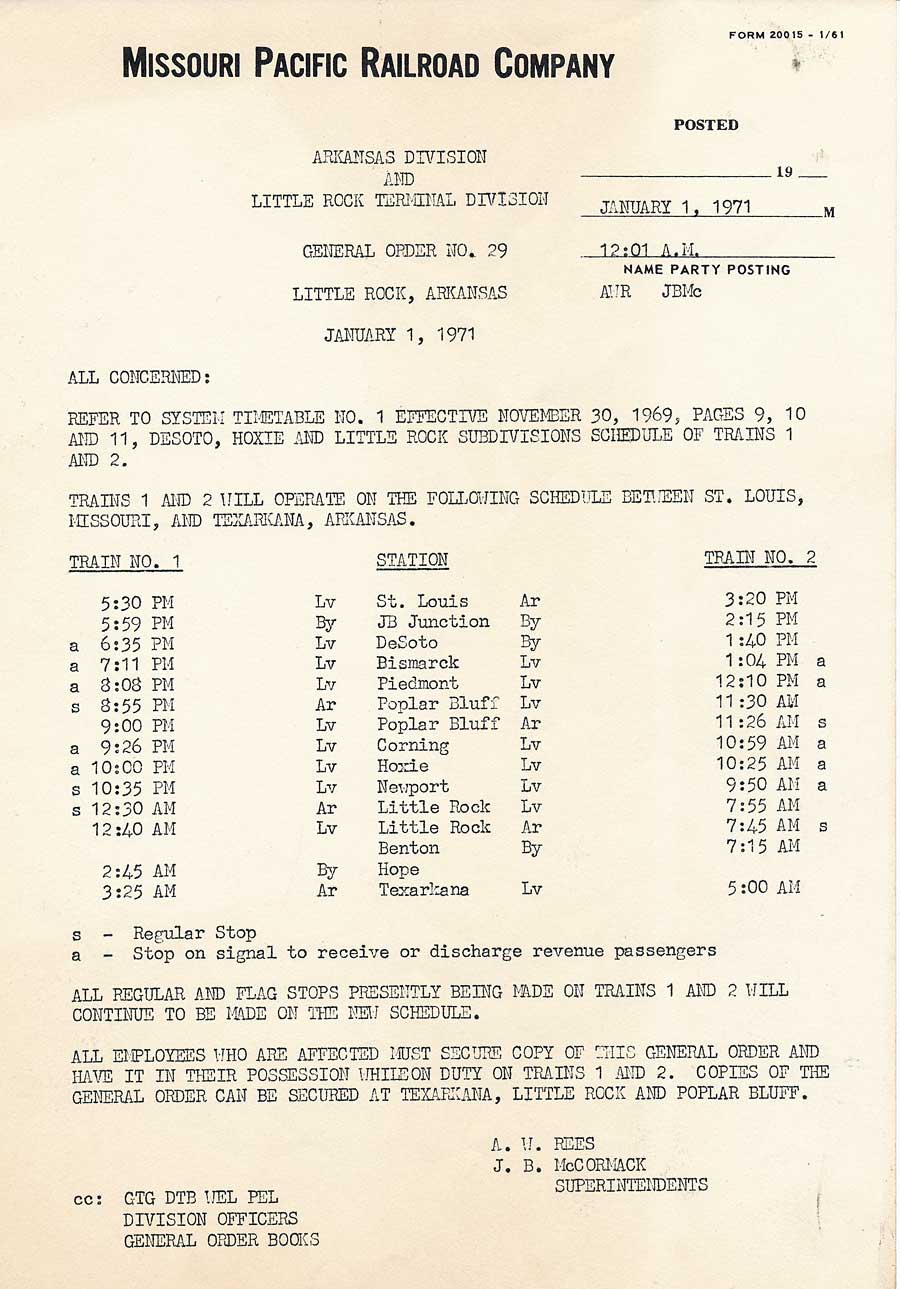
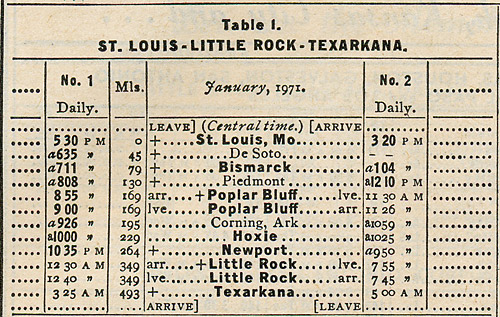
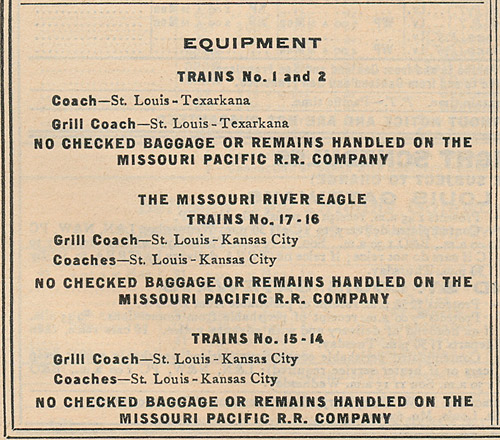
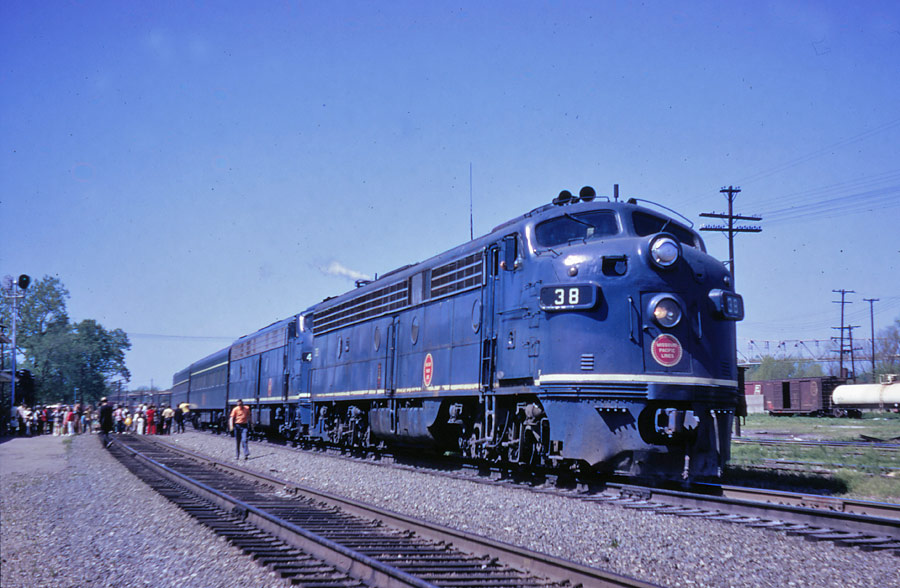
In preparation for what was then believed to be a trip on the last passenger train through Arkansas, tickets were secured early in the morning of April 30th for round trip transportation from Little Rock to De Soto, Missouri and return. De Soto was chosen in the hope that it would afford a better opportunity to photograph the trains arriving and departing, compared to St. Louis Union Station. These plans were complicated when it was discovered at the last minute (thanks to no public timetable) that train 2 did not stop at De Soto. A call from the ticket office to the chief dispatcher secured authorization for a special stop, however, and the appropriate tickets were sold. (This was apparently more or less standard procedure for stations such as De Soto and several on the Kansas City line which had a scheduled stop in one direction but were nonstop in the opposite direction.)
Another minor challenge was getting the ticket issued as a "book" ticket rather than a card ticket that would be taken up by the conductor with no souvenir left as proof of the trip. Since the plan was to buy a return ticket at De Soto, it was necessary to purchase a ticket to a destination which would require a two-coupon ticket. Passage was thus secured from Little Rock to St. Louis (one coupon) and St. Louis to Alton on the GM&O (the second coupon). With some explanation to the agent as to the reason for this purchase, he was happy to comply, for an additional $3.55 fare, using one of the newer style of MP book tickets which were rarely seen at Little Rock.
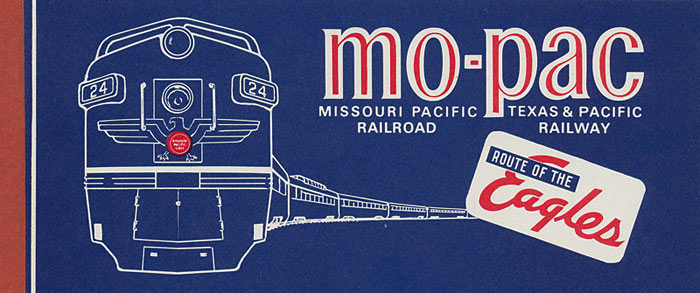
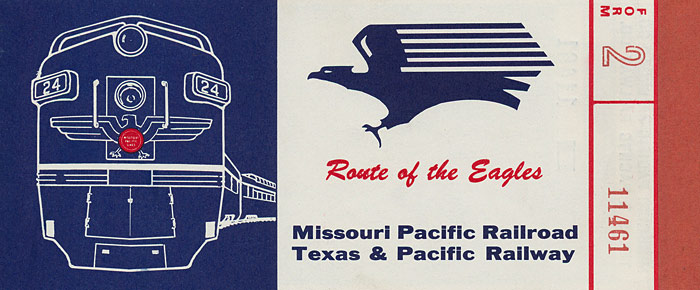
The last version of Missouri Pacific's book ticket stock was an attractive design which used standard passenger
illustrations as well as the "screaming eagle" which was more often associated with freight promotion.
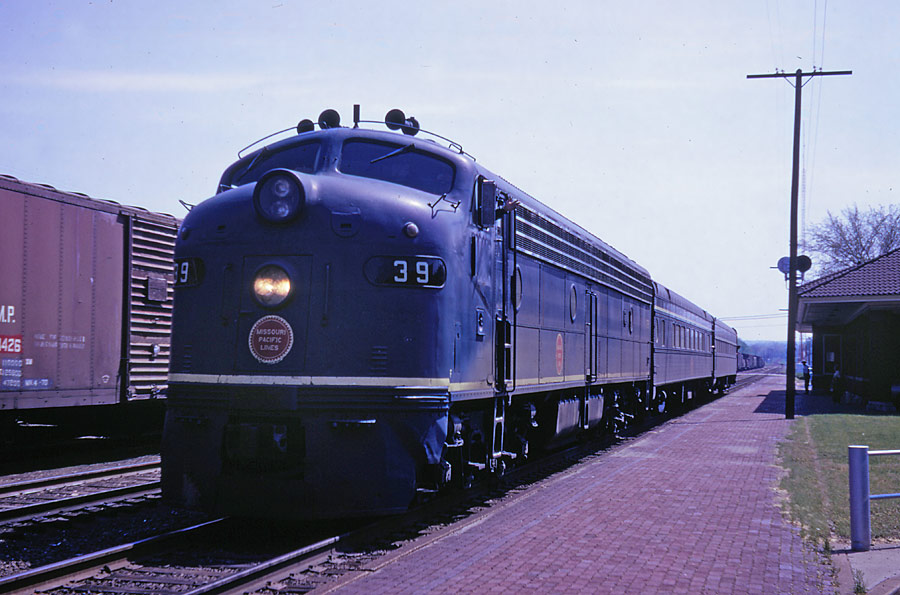
The last train 2 departs De Soto Missouri after a specially arranged stop, April 30, 1971.
The last train 2 included E-unit 39, grill coach 570 and coach 404.

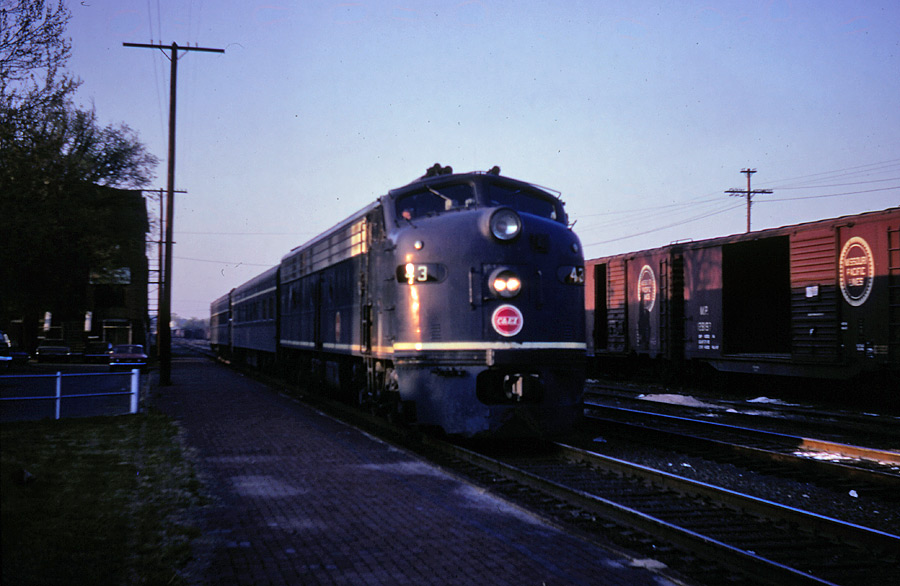
Rapidly fading late afternoon sunlight complicated photographs of the last train 1 at De Soto, 6:35 p.m.
The last Number 1 had C&EI E-unit 43, grill coach 569 and coach 411. Locomotive 43 had also handled the last Texas Eagle train 2 from Laredo to Texarkana on September 21, 1970.
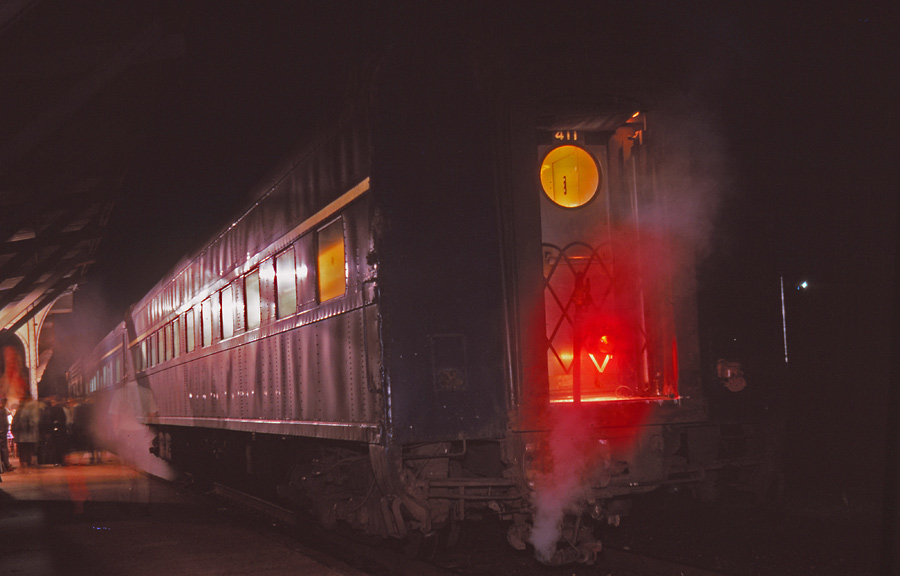
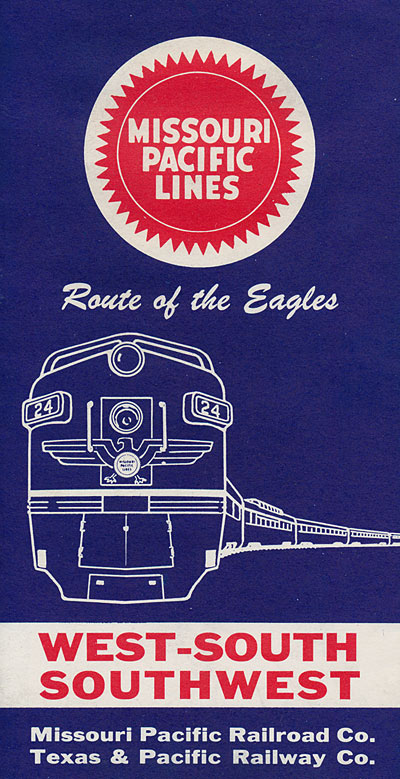
Postscript: We didn't know it at the time, but this last run that ended just after midnight on May 1, 1971 wasn't really the death of passenger service in Arkansas, but merely the start of a 35-month freight-only hiatus which ended with the arrival of Amtrak's Inter-American on March 13, 1974. It is again possible to step aboard a passenger train at Little Rock for St. Louis or Texas, book sleeping car accomodations, and enjoy visiting with other passengers in the lounge car or dining car, all amenities which had long vanished from the last Missouri Pacific trains.
For more information on today's passenger train travel options, visit Amtrak's Texas Eagle.